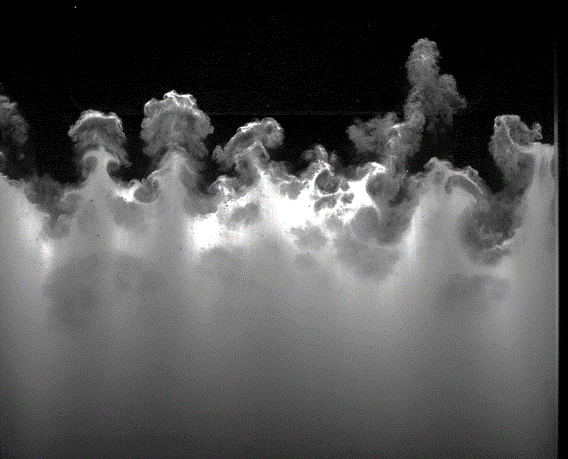
Benjamin Musci
Georgia Institute of Technology
As a child, Benjamin Musci got to explore cutting-edge space technology behind the scenes. An uncle worked on a shuttle mission and the Mars rover program at NASA’s Johnson Space Center and gave him a tour of capsules and other equipment. Musci eventually studied mechanical engineering so he could work on significant problems, particularly climate change.
Musci focused on experimental fluid dynamics at Ohio State University and built a small lightsaber-like chamber that created small plasma pulses – a model strategy for eliminating intermittent drag on high-speed aircraft. The project produced cool videos, Musci says, and cemented his decision to go to graduate school.
At the Georgia Institute of Technology, the Department of Energy National Nuclear Security Administration Stewardship Science Graduate Fellowship (DOE NNSA SSGF) recipient set out to combine fluid dynamics with clean-energy applications. Working with Devesh Ranjan, he’s built an experimental facility to test extreme fluid dynamics events that can occur in inertial confinement fusion (ICF) experiments.
 In these implosions, defects in shells that encase fusion fuel can cause the materials to mix, unpredictably perturbing and degrading the reaction. Musci runs computational models of these extreme events, applying high-energy shockwaves to gases of different densities, such as nitrogen and carbon dioxide, so they combine in complex patterns, like creamer in coffee. He and his colleagues can observe the entire mixing process, rather than just the period immediately after implosion or in the throes of the fusion reaction.
In these implosions, defects in shells that encase fusion fuel can cause the materials to mix, unpredictably perturbing and degrading the reaction. Musci runs computational models of these extreme events, applying high-energy shockwaves to gases of different densities, such as nitrogen and carbon dioxide, so they combine in complex patterns, like creamer in coffee. He and his colleagues can observe the entire mixing process, rather than just the period immediately after implosion or in the throes of the fusion reaction.
It took two years to build the instruments, he notes. “It's pretty rewarding to walk into the room and say OK, nothing was in here before. Now it's working, and we have actual data from it.”
Similar extreme mixing occurs in supernovae. Stars have dense elements such as iron in their cores while the lightest elements, helium and hydrogen, comprise the outermost layers. Astrophysical hydrodynamics simulations of exploding stars don’t accurately capture how those elements mix. Heavy elements from the core reach the exterior much sooner than models predict, he says.
Musci focused exclusively on climate models for his 2017 practicum at Lawrence Livermore National Laboratory. Working with Peter Gleckler and Paul Durack, he examined such simulations over a 20-year period, asking whether climate models can predict what we want to know. The task required him to work with the Linux computing framework and learn the Python programming language.
Those computational skills proved instrumental during a second Livermore practicum in summer 2020. He programmed a model of his extreme fluid mixing experiments, giving him new ways to test scenarios and probe observations. He’ll continue that work in LLNL’s High-Energy Density Physics Fellowship, which will support the final year of his graduate research.
Musci is exploring a range of post-graduate career options, especially at the national laboratories. The DOE NNSA SSGF let him take key courses outside his core Ph.D. requirements in Earth and atmospheric sciences and computer vision so he could explore a new research area. “They really trust you and give you flexibility that you can use almost any way you want.”
Image caption: An example of the fluid mixing Benjamin Musci studies. It’s an important process in inertial confinement fusion experiments and supernova physics. Credit: Benjamin Musci.


